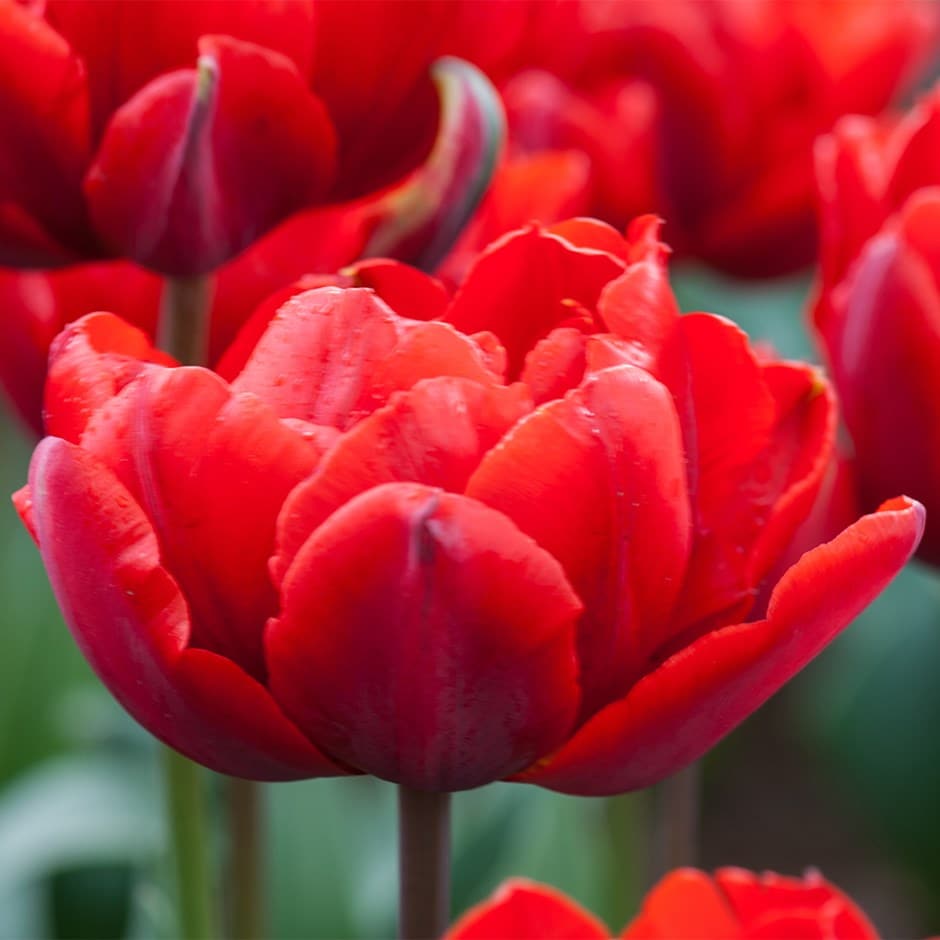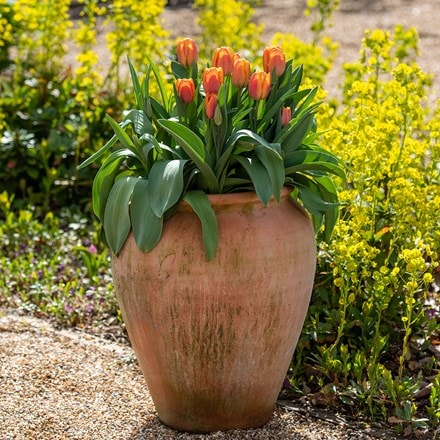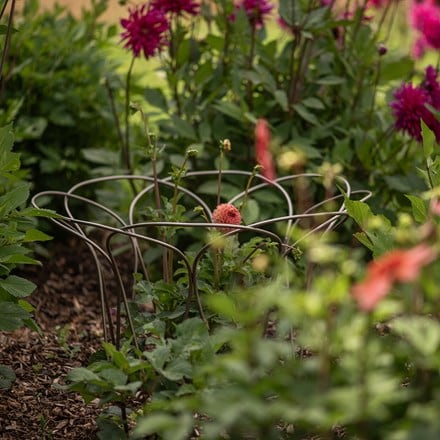Tulipa 'Red Princess'
double late tulip bulbs
- 21 × bulbs
- £21.00 £1.00 each
- available to order from summer
- 7 × bulbs
- £7.99 £1.14 each
- available to order from summer
Delivery options
- Bulbs (only) £4.99
- Position: full sun
- Soil: moderately fertile, moist but well-drained soil, or general purpose compost
- Rate of growth: average
- Flowering period: April to May
- Hardiness: fully hardy
- Bulb size: 11/12
Bold double flowers with rich crimson tones make this tulip a strong feature in late spring displays. The large, peony-style blooms have densely packed petals with subtle streaks of green and yellow, adding depth and variation to the overall colour.
Inner petals tend to be darker, creating a rich layered effect while the foliage is bluish-green, upright and neat, offering a tidy backdrop to the showy flowers.
Tulipa 'Red Princess' is valued for its long-lasting blooms and reliable performance, with strong stems that stand up well to spring weather. A holder of the RHS Award of Garden Merit, it makes an excellent cut flower and combines well with other late-season tulips.
Inner petals tend to be darker, creating a rich layered effect while the foliage is bluish-green, upright and neat, offering a tidy backdrop to the showy flowers.
Tulipa 'Red Princess' is valued for its long-lasting blooms and reliable performance, with strong stems that stand up well to spring weather. A holder of the RHS Award of Garden Merit, it makes an excellent cut flower and combines well with other late-season tulips.
Using fresh, good-quality compost, plant bulbs in pots from September to November. For borders, we advise waiting until after the first frosts (typically mid-October to early December depending on your location) to reduce the risk of potential disease such as Tulip Fire.
Plant bulbs 15-20cm (6-8in) deep and 10-15cm (4-6in) apart in fertile, well-drained soil. Alternatively, allow 7-9 bulbs per 30cm sq or 60-75 bulbs per m². If you’re unable to plant your bulbs immediately, they can be stored in a cool environment with good air circulation. Remove all the packaging and place them in a loose-weave jute sack before labelling and hanging up in a dry, unheated garden shed or well-ventilated greenhouse.
In spring, when the plants are in active growth, apply a high-potash fertiliser (like Tomorite) each week until the leaves start to die back. Pinch off the spent flower heads as the petals fall, and let the stem and foliage die back naturally. The bulbs can then be lifted and discarded, or cleaned, dried and stored (as before) for replanting the following autumn.
Plant bulbs 15-20cm (6-8in) deep and 10-15cm (4-6in) apart in fertile, well-drained soil. Alternatively, allow 7-9 bulbs per 30cm sq or 60-75 bulbs per m². If you’re unable to plant your bulbs immediately, they can be stored in a cool environment with good air circulation. Remove all the packaging and place them in a loose-weave jute sack before labelling and hanging up in a dry, unheated garden shed or well-ventilated greenhouse.
In spring, when the plants are in active growth, apply a high-potash fertiliser (like Tomorite) each week until the leaves start to die back. Pinch off the spent flower heads as the petals fall, and let the stem and foliage die back naturally. The bulbs can then be lifted and discarded, or cleaned, dried and stored (as before) for replanting the following autumn.
- Humans: Harmful if eaten; skin allergen; Pets: Ornamental bulbs - not to be eaten


